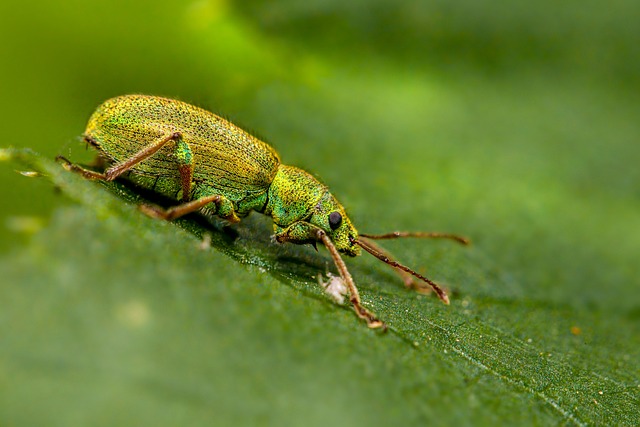Boxelder bugs, a common fall and winter pest in many regions, pose challenges due to their swarming behavior, nocturnal activity, and preference for warm, sunny locations. Traditional removal methods are often ineffective. Eco-friendly solutions, focusing on non-toxic barriers and traps, are gaining popularity. These methods disrupt the breeding cycle and specifically attract boxelder bugs without harming beneficial insects or the environment, offering a sustainable approach to management. A multi-step strategy including sealing entry points, deploying specialized traps, maintaining measures, and encouraging natural predators is recommended for effective control while minimizing ecological disruption.
Boxelder bugs (Boimerosphenus subniger) can be a nuisance, infesting homes and causing damage. Fortunately, eco-friendly trapping techniques offer effective boxelder bug removal without harmful chemicals. This article explores the understanding of these pests, the advantages of non-toxic solutions, and provides an overview of various traps and barriers. We’ll also guide you through implementation and maintenance tips for optimal control, helping you create a bug-free environment using sustainable methods. Discover eco-friendly boxelder bug solutions that work.
Understanding Boxelder Bugs and Their Behavior
Boxelder bugs (Boisea trivittata) are a common pest in many regions, known for their swarming behavior during the fall and winter months. Understanding their habits is crucial when it comes to effective control and removal. These insects prefer warm, sunny locations and are often found near windows, doors, and other areas where they can easily access buildings. They feed on a variety of plants, especially boxelder trees, hence the name.
Their behavior makes them particularly challenging to manage. Boxelder bugs spend most of the day in cracks, crevices, and sheltered spots, becoming active during twilight and nighttime hours. This nocturnal nature means traditional removal methods may not be as successful. Eco-friendly solutions are increasingly popular, focusing on non-toxic barriers and traps to discourage their presence without harming beneficial insects or the environment.
Benefits of Eco-Friendly Trapping Techniques
Using eco-friendly trapping techniques offers several advantages when it comes to managing and removing boxelder bugs (Boas). One of the primary benefits is the minimal impact on non-target species and the environment. Traditional pest control methods often rely on toxic chemicals that can harm beneficial insects, birds, and other wildlife. In contrast, these innovative eco-friendly solutions are designed to attract and capture boxelder bugs specifically, reducing the risk of ecological disruption.
Additionally, green trapping methods provide a more sustainable and long-term approach to bug removal. They not only effectively control the current boxelder bug population but also help prevent future infestations by breaking the breeding cycle. This is particularly important for maintaining a balanced ecosystem and ensuring the well-being of local wildlife that rely on natural habitats.
Different Types of Traps and Barriers
Implementation and Maintenance Tips for Effective Control
Implementing eco-friendly boxelder bug solutions requires a strategic approach and consistent maintenance for optimal control. Start by identifying entry points, such as gaps in screens or cracks in walls, and seal them using appropriate materials like caulk or mesh. Next, deploy traps and barriers specifically designed to catch these pests without harming beneficial insects. Place sticky traps near windows and doors, and consider setting up physical barriers like door sweeps to prevent their re-entry. Regularly inspect and clean these traps, replacing the sticky surfaces as needed. Maintaining a clean environment is crucial; eliminate any debris or standing water that might attract them. Additionally, promoting natural predators like ladybugs and spiders can further enhance your eco-friendly boxelder bug removal efforts.
In conclusion, addressing boxelder bug infestations with eco-friendly trapping techniques offers a safe and sustainable solution. By understanding these insects’ behavior and utilizing specific traps tailored to their preferences, homeowners can effectively control their presence without harmful chemicals. These methods not only protect sensitive ecosystems but also provide long-term benefits for those seeking permanent relief from boxelder bugs. With the right approach, it’s possible to maintain a bug-free environment while preserving the balance of nature.
